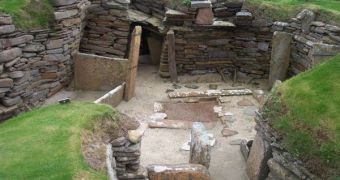Recent archaeological discoveries hint at the fact that the early humans, even those living as far back as the Stone Age, used to separate their homes into various living quarters, much like we do today. Experts say that these people did not eat in the same place they slept, or hanged out during the day, which is a remarkable finding by any standards. Scientists believed that the separation of living quarters appeared a lot later than the archaeological findings seem to now suggest, LiveScience reports.
The site that yielded these conclusions is more than 800,000 years old, and is called Gesher Benot Ya‘aqov. The Israel-based location has yielded some fairly interesting insights into the life of our Stone Age ancestors over the years, archaeologists say. They also add that the settlement predates modern humans, as in Homo sapiens. Most likely, they continue, the structures were inhabited by another race of hominids, known as Homo erectus. However, more evidence is needed before a final say on who lived there can be made.
What really puzzled experts was the fact that these highly organized homes were thought before to be the marker of a modern human intelligence, and not one stretching back nearly a million years into the past. The new findings challenge established knowledge on how human intelligence evolved over the ages, and experts now need to find new models of explaining how such advanced skills were available to Homo erectus all those years ago. “Seeing this at such an early site was surprising. This means there was some ability or some need or requirement of organization,” Hebrew University of Jerusalem archaeozoologist Rivka Rabinovich says.
The expert adds that the earliest known proof of home compartmentalization was found at a site that was only 100,000 years old. Now, finding the same thing in structures eight time older is really weird. “The designation of different areas for different activities indicates a formalized conceptualization of living space, often considered to reflect sophisticated cognition and thought to be unique to Homo sapiens,” the research group behind the discovery writes in the December 18 issue of the top journal Science.
The group also reveals that a large number of fossilized remains were collected from the settlement, which was found at the side of an ancient, now-dry lake. Everything from flint, rock tools, crab shells, and fish bones to bits of fruits, seeds, nuts, bark and wood was discovered within the village. These findings also suggest that the population living there not only hunted land animals, but fish and other aquatic creatures as well. The new study “clearly shows that [Homo erectus were] much more advanced than we previously thought,” University of Haifa expert Irit Zohar, a coauthor of the Science paper, concludes.

 14 DAY TRIAL //
14 DAY TRIAL //